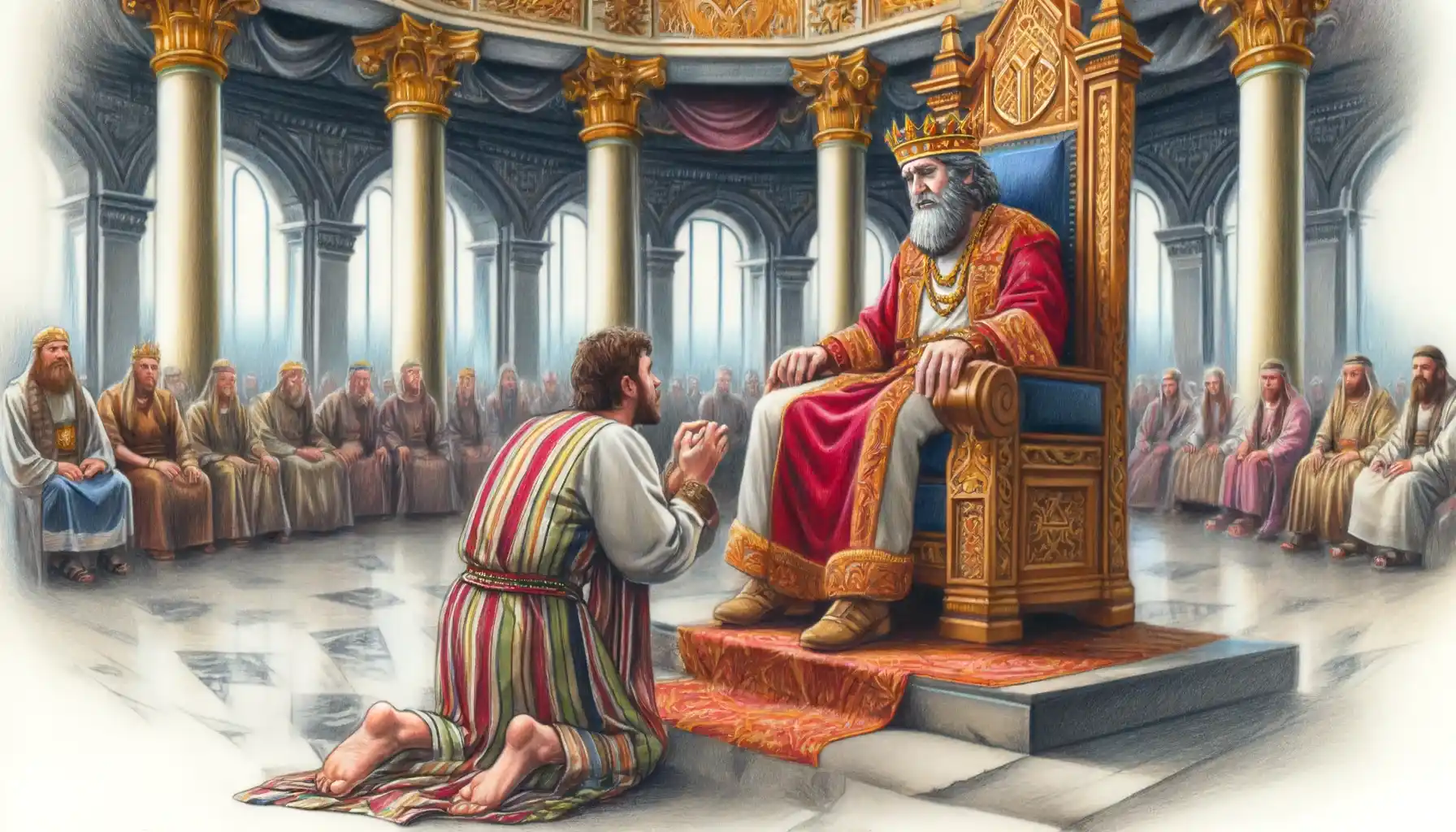
The Parable of the Unforgiving Servant
The Parable of the Unforgiving Servant, as recounted in Matthew 18:21-35, offers profound lessons on forgiveness and mercy within the context of Jesus’ teachings. Here are some quick facts about this parable:
- Context of the Parable: Peter asks Jesus how many times he should forgive someone who sins against him, suggesting the number seven. Jesus responds by saying not just seven times, but seventy-seven times (or seventy times seven, depending on the translation), emphasizing the boundlessness of forgiveness.
- The King and the Servant: The parable begins with a king who decides to settle accounts with his servants. One servant owes him ten thousand talents, an enormous sum that would be impossible to repay. The servant pleads for mercy, and the king compassionately forgives the debt.
- The Servant’s Lack of Mercy: After being forgiven, this same servant encounters another servant who owes him a much smaller amount, one hundred denarii. Despite his own experience of mercy, he refuses to forgive the other servant’s debt and has him thrown into prison.
- The Reaction of the Community: The fellow servants are distressed by the unforgiving servant’s actions and report him to the king. This leads to the king revoking his earlier act of mercy and punishing the unforgiving servant because he did not extend the mercy he himself received.
- Jesus’ Conclusion: Jesus concludes the parable by explaining that this is how God will treat those who do not forgive others from their hearts. The parable underscores the expectation that forgiven people should forgive others.
- Theological Significance: This parable highlights the Christian doctrine of forgiveness, illustrating that it is expected to be limitless and reflective of the forgiveness that God extends to humanity. It stresses the importance of a forgiving heart in the Christian faith.
The Parable of the Unforgiving Servant in Matthew 18:21-35 is a rich and complex teaching from Jesus, layered with theological and moral implications. This parable follows a conversation between Jesus and Peter, wherein Peter inquires about the limits of forgiveness, perhaps seeking a quantifiable answer to what he perceives as a question of law or duty. Jesus’ response, both in his conversation with Peter and through the parable, transcends legalistic boundaries, illustrating the profound depths of God’s grace and the moral imperative for Christians to emulate this grace in their interpersonal relationships.
Theological Context
The parable is set within the broader discourse of Matthew’s Gospel, which addresses issues of community conduct, reconciliation, and the Kingdom of Heaven. The number “seventy-seven times” (or seventy times seven) signifies boundlessness, drawing from Old Testament roots such as Genesis 4:24, where Lamech speaks of avenging himself “seventy-seven times.” Here, however, Jesus reverses the concept of vengeance with one of forgiveness, highlighting the radical nature of his teachings compared to traditional Jewish law.
The Parable’s Structure and Content
- The King’s Mercy: The king’s decision to forgive the enormous debt of ten thousand talents (a symbolic figure representing an unpayable debt) reflects God’s infinite mercy. In the economic context of Jesus’ time, such a debt would be larger than the total budget of a small country, indicating that the servant’s situation was beyond hope without the king’s intervention. This mirrors the theological understanding of sin as an insurmountable debt to God, which can only be canceled by divine grace.
- The Servant’s Response: The forgiven servant’s harsh treatment of another servant over a significantly smaller debt (one hundred denarii, roughly a few months’ wages) starkly contrasts with the king’s generosity. This segment of the parable serves as a moral mirror for the audience, challenging them to see their own sometimes hypocritical behavior. Theologically, it illustrates human failure to live up to divine standards of mercy and forgiveness, despite being recipients of God’s limitless grace.
- Community Justice: The reaction of the fellow servants, who are distressed by the unforgiving servant’s actions and appeal to the king, introduces an element of community accountability. It suggests that Christian ethics are not only individual but also communal; the community is responsible for upholding the values of justice and mercy.
- The King’s Judgment: The king’s final response to revoke his mercy and punish the unforgiving servant underscores the seriousness with which God views the obligation to forgive others. It can be interpreted as indicating a conditional aspect of divine forgiveness — that receiving God’s mercy involves a reciprocal responsibility to show mercy.
Interpretations and Implications
This parable offers multiple layers of interpretation:
- Ethical: It calls for an ethic of unlimited forgiveness among individuals, challenging believers to forgive as they have been forgiven by God.
- Eschatological: The harsh judgment of the unforgiving servant serves as a warning of divine judgment, stressing that final judgment will take into account one’s adherence to Jesus’ teachings on forgiveness.
- Communal: It emphasizes the role of the community in fostering an environment of forgiveness and holding its members accountable to the standards of the Gospel.
Conclusion
In conclusion, the Parable of the Unforgiving Servant is not merely about promoting forgiveness as a virtue but rather situates forgiveness at the heart of Christian discipleship and community life. It invites believers to reflect deeply on the nature of God’s forgiveness and to practice this forgiveness in all relationships, driven by an understanding of the grace they themselves have received. This parable, thus, not only instructs but also challenges the faithful to live out the radical implications of Jesus’ message in their everyday lives.



